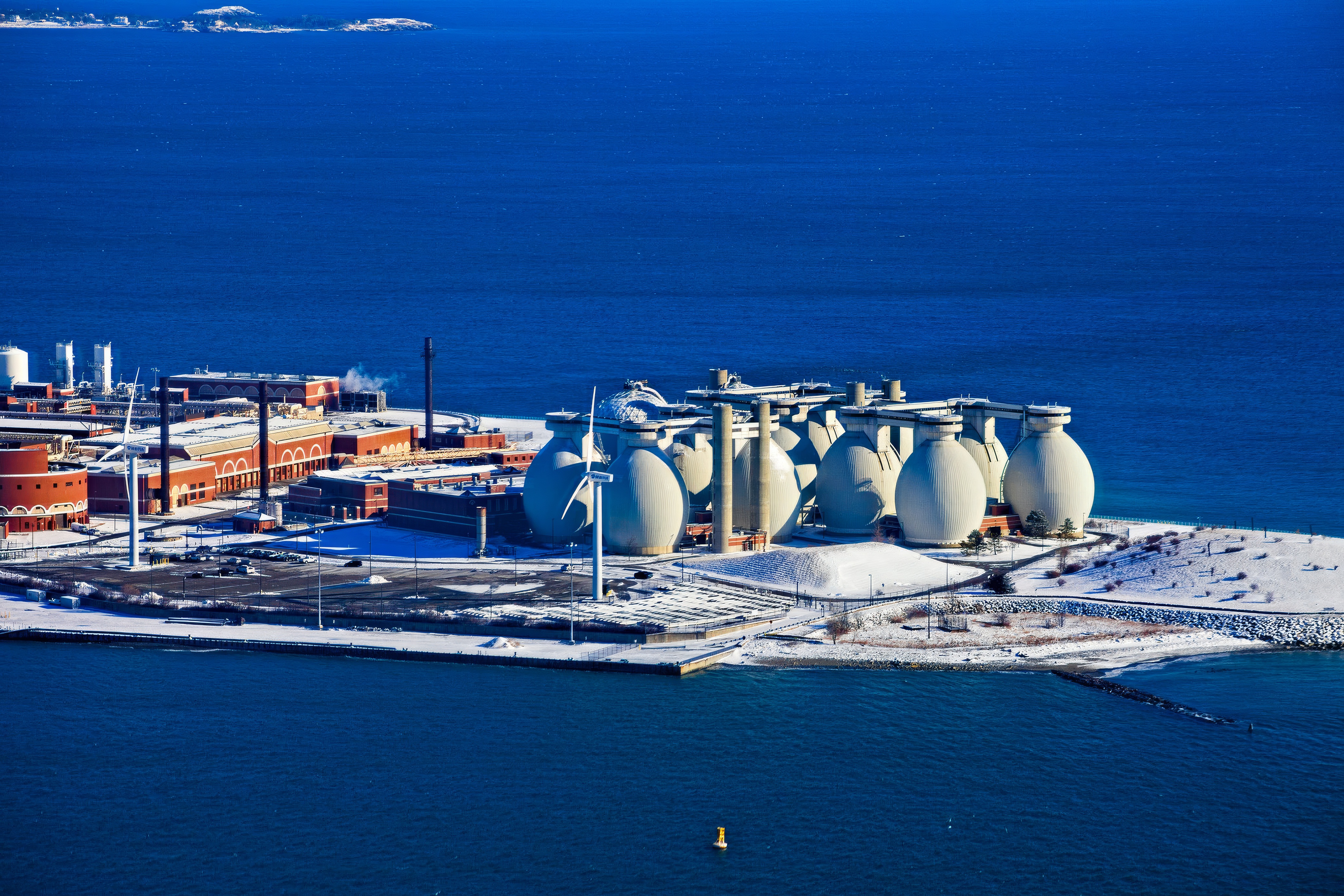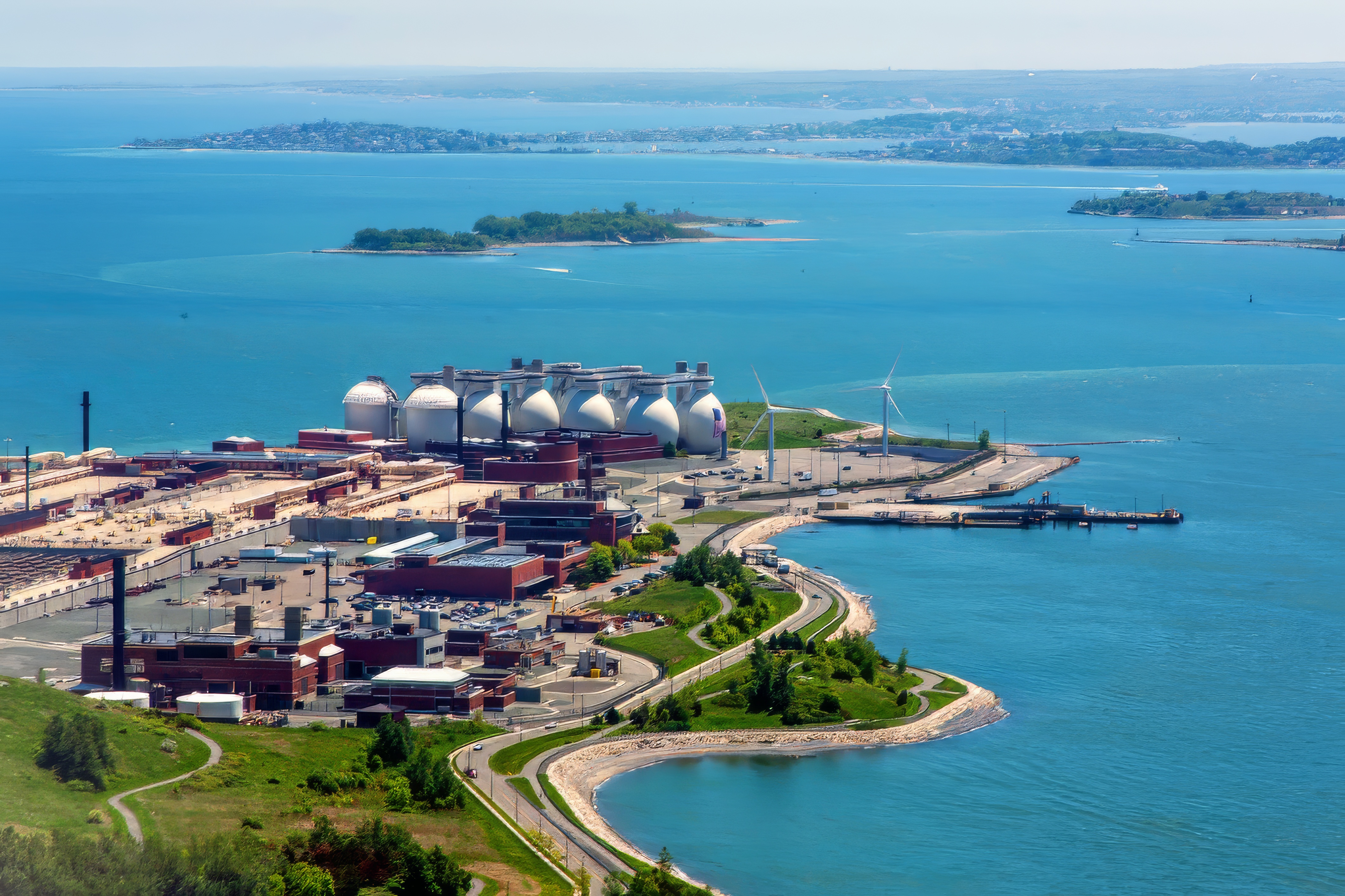Deer Island, located in Boston Harbor, Massachusetts, is a picturesque peninsula known for its unique combination of a wastewater treatment plant, natural beauty, and recreational opportunities. While Deer Island was once truly an island, the 1938 New England hurricane, one of the most powerful and destructive storms ever to hit New England, dramatically altered the geography of the island. The immense force of the storm and the resulting surge reshaped the Boston Harbor, depositing large amounts of sediment and debris that effectively connected Deer Island to the mainland, transforming it from a true island into a peninsula, which it remains today.
Indigenous Concentration Camp
Deer Island, located in the Boston Harbor, has a dark and often overlooked chapter in its history as an indigenous concentration camp during the years 1675-76. This tragic period was part of the King Philip's War, a conflict between English colonists and Native American tribes in New England. The war was named after Metacom, the Wampanoag chief known as King Philip, who led a coalition of tribes against the colonists. As the conflict escalated, the English colonists in Massachusetts sought to neutralize what they perceived as a Native American threat to their settlements.
In a drastic and inhumane measure, colonial authorities decided to forcibly remove and intern local Native Americans, including men, women, and children, regardless of their involvement in the conflict. In the fall of 1675, hundreds of Native Americans, primarily from the Nipmuc, Wampanoag, and Narragansett tribes, were rounded up and transported to Deer Island. The island, barren and isolated, was ill-suited to support life. The internees were confined without adequate shelter, food, or medical care, leading to widespread suffering and death. The harsh winter conditions further exacerbated their plight, and many perished due to starvation, cold, and disease.
The use of Deer Island as a concentration camp remains a somber episode in the history of colonial America, reflecting the brutal treatment of Native American populations during this era. The suffering endured by the indigenous people interned on Deer Island is a stark reminder of the human cost of conflict and the extreme measures taken by colonial powers. Today, Deer Island serves different purposes, but the memory of this dark period continues to be a significant part of its historical legacy, drawing attention to the need for recognition and reconciliation of past injustices committed against Native American communities.
Irish Immigrant Quarantining
During the Great Famine in Ireland, which lasted from 1845 to 1852, Deer Island in the Boston Harbor played a significant yet distressing role in the history of Irish immigration to the United States. As thousands of Irish fled their homeland to escape the devastating famine, many arrived in Boston, one of the major port cities in the U.S. During this period, Deer Island became a place where these immigrants, particularly those who were sick or impoverished, were quarantined and housed under deplorable conditions.
The influx of Irish immigrants, many of whom arrived malnourished and suffering from diseases like typhus and cholera, overwhelmed the city's resources. In an attempt to control the spread of disease and manage the situation, city authorities used Deer Island as a quarantine station. The conditions on the island were harsh and inhospitable. Overcrowding, inadequate shelter, limited access to medical care, and poor sanitation led to high mortality rates among the detainees. The island's use as a quarantine station reflected the broader challenges and prejudices faced by Irish immigrants in America, who were often met with hostility and discrimination.
This period in Deer Island's history is a poignant reminder of the struggles faced by Irish immigrants during one of the worst humanitarian crises of the 19th century. The experiences of those confined on Deer Island highlight the hardships of immigration under dire circumstances, as well as the often harsh response of the receiving societies. Today, the story of the Irish immigrants on Deer Island serves as a testament to the resilience of those who sought a new life in America despite facing immense challenges and as a reminder of the importance of compassion and support for refugees and immigrants.
Deer Island Prison
Deer Island Prison, with a history dating back to the mid-19th century, was an infamous penal institution located on Deer Island in the Boston Harbor. Established in 1880, the prison was initially built to alleviate overcrowding in other local jails and penitentiaries. It was part of a broader system of correctional facilities in the Boston area and was designed to house short-term inmates serving sentences for less severe crimes (e.g., drunkenness, disorderly conduct, larceny, illegal possession of drugs). The prison's location on Deer Island made it relatively isolated, which was thought to be beneficial for security purposes and for keeping the inmates separated from the general population.
Throughout its operational years, Deer Island Prison was known for its harsh conditions and strict regime. The prison's infrastructure and facilities were often inadequate, leading to overcrowding and unsanitary living conditions. These issues, coupled with the harsh disciplinary practices, made life in the prison extremely challenging for its inmates. In the early 20th century, the prison underwent several reforms and renovations in an attempt to improve living conditions and the treatment of prisoners. However, despite these efforts, the reputation of Deer Island Prison as a tough and unforgiving place persisted. The prison was eventually closed in the mid-20th century, and its functions were transferred to more modern correctional facilities. The closure of Deer Island Prison marked the end of an era in the history of Boston's penal system, and the island itself underwent significant transformation in the following decades.
Wastewater Treatment Plant
Deer Island, once known for its grim history as a site of internment and quarantine, has been transformed in modern times into a location for one of the world's most significant wastewater treatment facilities. The Deer Island Wastewater Treatment Plant, recognized as the seventh largest in the world by capacity and the fourth largest in the United States, stands as a testament to advancements in environmental management and engineering. This facility plays a crucial role in treating wastewater from the Boston metropolitan area, serving a significant portion of Massachusetts' population.
The plant is a marvel of modern engineering and environmental technology. It treats an average of 370 million gallons of wastewater per day, with a peak capacity to handle up to 1.2 billion gallons daily during heavy rainfall or snowmelt. This capacity makes it a critical component in maintaining the region's public health and environmental safety. The treatment process at Deer Island is complex and thorough, involving multiple stages of filtration, biological treatment, and disinfection to ensure that the water released back into Massachusetts Bay is clean and environmentally safe. The facility is also notable for its efforts in energy efficiency and waste minimization, including the use of methane gas from the treatment process to generate power.
Today, the Deer Island Wastewater Treatment Plant stands as a symbol of progress and commitment to environmental stewardship. Its presence on Deer Island is a stark contrast to the island's historical uses, reflecting a shift towards sustainable and responsible management of natural resources. The plant not only serves a practical purpose in wastewater treatment but also represents a critical step in protecting the natural beauty and ecological health of the Boston Harbor and surrounding areas.
National Recreation Area
Deer Island is part of the Boston Harbor Islands National Recreation Area, making it a valuable natural resource for both residents and visitors interested in conservation and recreation.
Today, Deer Island is a unique blend of industry and nature, highlighting the importance of responsible environmental management and public access to natural spaces.







